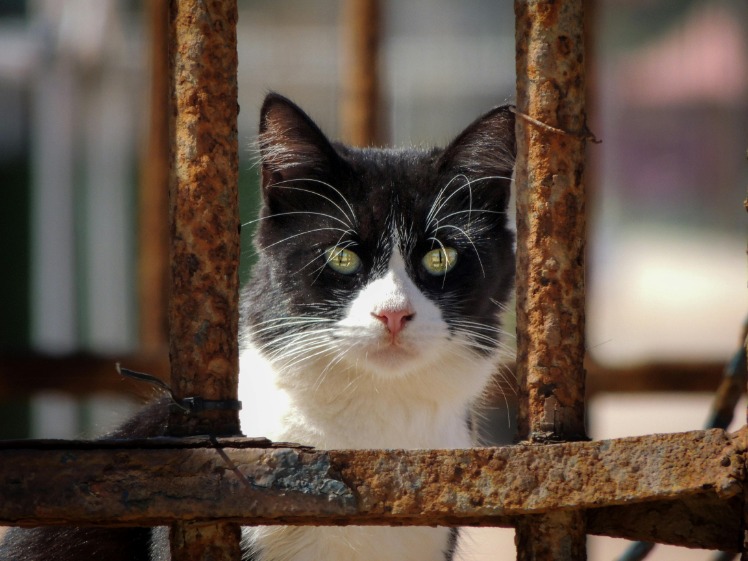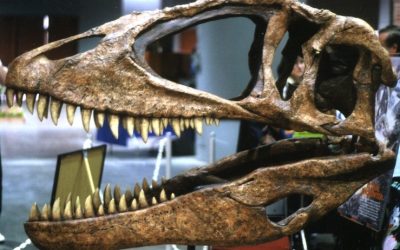Native Mammals of Algeria
Algeria is home to a diverse array of native mammals that enrich the country’s unique ecosystems. From the rugged mountains to expansive deserts, these animals have adapted to the varied landscapes and climates across the nation. Understanding the native mammals of Algeria provides insight into the region’s biodiversity and ecological significance.
Barbary Macaque
Algeria is home to a diverse range of native mammals, among which the Barbary Macaque is one of the most iconic. This species is native to the rocky regions and forests of the Atlas Mountains in northern Algeria and neighboring Morocco. The Barbary Macaque is notable for being one of the few primates found outside of sub-Saharan Africa, and it plays an important role in the local ecosystem as a frugivore and seed disperser. With their social groups and adaptable behavior, these macaques have become a symbol of Algeria’s natural heritage.
Addax Antelope
The Addax Antelope, also known as the white antelope, is a critically endangered mammal native to the Sahara Desert region, including parts of Algeria. Adapted to harsh desert environments, the Addax has a pale, sandy coloration that provides effective camouflage in the dunes. Its impressive spiral horns and sturdy build help it survive extreme temperatures and scarce water sources. Historically, the Addax was more widespread across North Africa, but habitat loss, poaching, and overgrazing have led to significant declines in its population. Conservation efforts are ongoing to protect this unique native mammal, emphasizing the importance of preserving Algeria’s rich and diverse desert wildlife.
Golden Jackal
The golden jackal (Canis aureus) is a notable native mammal of Algeria, contributing to the country’s rich biodiversity. It is a medium-sized canid characterized by its slender body, bushy tail, and distinct golden-yellow fur, which helps it blend into the arid and semi-arid terrains of North Africa. In Algeria, the golden jackal is primarily found in desert, steppe, and mountainous regions, where it adapts well to diverse habitats.
The golden jackal is a highly adaptable predator and scavenger, feeding on small mammals, birds, insects, and human leftovers. It plays an important role in the ecosystem by controlling populations of rodents and other small animals. The species is social, often living in pack groups that cooperate in hunting and raising their young.
Conservation-wise, the golden jackal faces threats from habitat loss and hunting, but it remains numerous and widely distributed across Algeria. Its presence indicates a healthy ecosystem and highlights the importance of preserving the native mammals within Algeria’s diverse environments.
Fennec Fox
The Fennec fox is a remarkable native mammal of Algeria, renowned for its distinctive large ears and small body. Adapted to the desert environment, it thrives in the arid regions and savannas of the country. Its keen hearing helps it locate prey beneath the sand, such as insects, small mammals, and plants. The Fennec fox is also known for its nocturnal behavior, which helps it avoid the extreme daytime heat of the Algerian desert. Its thick fur provides insulation against the cold desert nights, while its large ears aid in dissipating heat. As a vital part of Algeria’s desert ecosystem, the Fennec fox symbolizes the unique wildlife adapted to survive in harsh desert conditions and is protected under various conservation efforts in the region.
Cuvier’s Gazelle
Algeria is home to a diverse range of native mammals, including several species adapted to its varied landscapes. Among these native mammals, Cuvier’s Gazelle is a notable and unique species that inhabits the region’s mountainous and semi-arid areas.
Cuvier’s Gazelle (Gazella cuvieri) is a rare and endangered ungulate that primarily resides in the mountains of Algeria and neighboring countries. It is characterized by its slender build, graceful stature, and distinctive curved horns. This species has adapted to the rugged terrain and scarce water sources of its habitat, making it a fascinating example of wildlife resilience in North Africa.
- Endemic to North Africa, particularly Algeria and Tunisia
- Habitat includes rocky hillsides, mountains, and semi-arid plains
- Diet mainly consists of grasses, herbs, and shrubs
- Population decline due to hunting and habitat loss
- Protected under conservation efforts to prevent extinction
Bird Species in Algeria
Algeria is a diverse country rich in wildlife, renowned for its variety of bird species. From lush forests to expansive deserts, the region provides a unique habitat for both resident and migratory birds. Exploring the bird species in Algeria offers insight into the country’s vibrant ecosystems and the importance of conservation efforts to protect its avian inhabitants.
Greater Flamingo
The Greater Flamingo is one of the most striking bird species found in Algeria, renowned for its vibrant pink feathers and long, graceful legs. This species primarily inhabits the coastal lagoons and wetlands along the Mediterranean coast, where it feeds on small crustaceans, algae, and plankton. In Algeria, the Greater Flamingo plays a vital role in the ecosystem, contributing to the health of wetland habitats. These birds are social creatures, often seen in large colonies that can number in the thousands, creating breathtaking scenes during their breeding seasons. The presence of the Greater Flamingo highlights the rich biodiversity of Algeria’s wetlands and the importance of conserving these vital habitats for future generations.
Egyptian Vulture
The Egyptian Vulture, scientifically known as Neophron percnopterus, is one of the remarkable bird species found in Algeria. This majestic bird is easily recognizable by its predominantly white plumage, contrasting with black flight feathers, and its distinctive yellow face. The Egyptian Vulture is a scavenger, often feeding on carrion, and plays a vital role in the ecosystem by helping to keep the environment clean.
In Algeria, the Egyptian Vulture inhabits open semi-desert areas, rocky cliffs, and mountainous regions. Its presence is a significant indicator of the health of local ecosystems, and it is considered vulnerable due to threats such as poisoning, habitat loss, and environmental pollution. Conservation efforts are underway to protect this impressive bird and its habitat within the country.
Overall, the Egyptian Vulture contributes to Algeria’s diverse avian fauna, emphasizing the importance of preserving the rich biodiversity of the region. Protecting such species is crucial for maintaining ecological balance and ensuring these unique birds continue to thrive for future generations.
Black-crowned Crane
The Black-crowned Crane (Balearica pavonina) is a remarkable bird species found in parts of Africa, including regions of Algeria. It is known for its striking appearance, with a distinctive black crown on its head, white cheeks, a grey body, and elegant long legs. These cranes thrive in wetlands, marshes, and savannas, where they feed on a variety of plant materials, insects, and small aquatic creatures. In Algeria, their presence is primarily associated with the eastern regions, where suitable habitat exists. The Black-crowned Crane is an important part of the local biodiversity, contributing to the health of wetland ecosystems. Due to habitat loss and other environmental pressures, their populations are monitored to ensure their continued survival in Algeria and across Africa.
Sandgrouse Species
Algeria is home to a diverse range of bird species, including several fascinating sandgrouse species that are well-adapted to the country’s arid and semi-arid environments. Among these, the Crowned Sandgrouse (Pterocles coronatus) is notable for its distinctive crown-like crest and roosting habits in rocky and sandy areas. The Spotted Sandgrouse (Pterocles senegallus) is another common species, recognized by its patterned plumage that provides effective camouflage in desert landscapes. Additionally, the Thick-billed Sandwich (Pterocles burchelli) and the Yellow-throated Sandgrouse (Pterocles gutturalis) also inhabit various regions of Algeria, contributing to the rich avian biodiversity of the area. These birds play an important role in the ecosystem, especially in their roles as water carriers, as they are known for their remarkable ability to transport water in their belly feathers across great distances in arid zones.
Houbara Bustard
Algeria is home to a diverse array of wildlife, including several notable bird species. Among these, the Houbara Bustard stands out as a significant and unique species found in the region. The Houbara Bustard, known scientifically as Chlamydotis undulata, is a large ground-dwelling bird that inhabits the arid and semi-arid regions of North Africa, including parts of Algeria. Esteemed for its elusive nature and impressive size, the Houbara Bustard plays an important role in the desert ecosystems. It is also highly valued in traditional hunting, which has historically impacted its population. Conservation efforts are ongoing to protect this vulnerable species, ensuring its survival amidst environmental challenges and human activity. The presence of the Houbara Bustard highlights Algeria’s rich avian diversity and the importance of preserving its natural habitats for future generations.
Reptiles and Amphibians
Reptiles and amphibians are fascinating creatures that play vital roles in Algeria’s diverse ecosystems. These animals have unique adaptations that allow them to thrive in a variety of habitats, from arid deserts to lush wetlands. Understanding their characteristics and behaviors helps us appreciate the richness of Algeria’s wildlife and the importance of conserving these remarkable species.
Levantine Frog
The Levantine frog is a fascinating amphibian native to the eastern Mediterranean region, including parts of Algeria. It is known for its adaptability to various habitats, often found in wetlands, ponds, and temporary pools. This species plays a vital role in the local ecosystem by controlling insect populations and serving as prey for larger predators. Reptiles and amphibians like the Levantine frog are essential indicators of environmental health, reflecting the quality of their habitats. Protecting these species helps maintain biodiversity and ecological balance across Algeria’s diverse landscapes.
Armenian Viper
The Armenian Viper is a notable reptile found in the regions near the Caucasus, but it is not native to Algeria. However, Algeria is home to a diverse array of reptiles and amphibians. Among the reptiles, the African saw-scaled viper and the Sahara sand viper are prevalent in the desert landscapes, while the False Cobra and various geckos inhabit the rocky and arid environments. Amphibians in Algeria include species such as the Algerian rainbow frog and various toads that thrive in moist areas and temporary water bodies. These animals play essential roles in Algeria’s ecosystems, contributing to the biodiversity and maintaining ecological balance in the arid and semi-arid habitats of the region.
Sand Monitor Lizard
Reptiles and amphibians are an important part of Algeria’s diverse wildlife, with the Sand Monitor Lizard being one of the notable reptiles inhabiting this region. These creatures are well-adapted to the arid and desert environments characteristic of much of Algeria’s landscape.
The Sand Monitor Lizard, scientifically known as Varanus griseus, is a large, terrestrial lizard that is often seen basking on rocks or moving swiftly across sandy terrains. It plays a vital role in controlling insect and small animal populations within its habitat.
- Habitat: The Sand Monitor Lizard is primarily found in desert and semi-desert regions of Algeria, especially in sandy dunes and rocky outcrops.
- Physical Features: It has a robust body covered with rough scales, a long tail, and powerful limbs that aid in digging and climbing. Its coloration provides camouflage against the desert terrain.
- Diet: It is carnivorous, feeding on insects, small mammals, birds, and eggs.
- Behavior: The lizard is known for its speed and agility, often seen basking during the day and retreating into burrows at night to escape the heat.
- Conservation Status: While currently not critically endangered, habitat destruction and illegal pet trade pose threats to its populations.
Moroccan Cobra
Reptiles and amphibians are diverse groups of animals found in Algeria’s varied ecosystems. Among these, the Moroccan Cobra, also known as Naja haje legionis, is a notable venomous snake that inhabits parts of North Africa, including Algeria. This snake is characterized by its impressive size, reaching up to 2 meters, and its distinctive hood that it expands when threatened. It plays a crucial role in controlling pest populations and maintaining ecological balance. Reptiles such as this cobra adapt well to the arid and semi-arid environments of Algeria, often found in rocky areas, savannas, and agricultural regions. Amphibians, although less prevalent in these dry habitats, can be seen in wetter areas like oases and wetlands, contributing to the region’s rich biodiversity. Understanding and preserving these animals is essential for maintaining the ecological health of Algerian environments.
Bordered Terrapin
The Bordered Terrapin is a fascinating amphibian found in North Africa, including regions of Algeria. Known for its distinctive shell markings and semi-aquatic lifestyle, this turtle inhabits freshwater environments such as rivers, lakes, and marshes. Reptiles and amphibians play an important role in Algeria’s diverse ecosystems, helping to maintain environmental balance. The Bordered Terrapin, in particular, is adapted to the warm climate and abundant water sources in the region, making it a notable species among Algeria’s native fauna. Conservation efforts are essential to protect these unique creatures from habitat loss and pollution, ensuring their survival for future generations.
Marine Life Along the Algerian Coast
The Algerian coast boasts a vibrant and diverse marine ecosystem that is home to a wide variety of marine life. Stretching along the Mediterranean Sea, this region offers a rich habitat for numerous species of fish, mollusks, and marine mammals. The unique biodiversity of marine animals along the Algerian coast plays a vital role in preserving the health of the marine environment, making it an intriguing area for both scientists and nature enthusiasts.
Caretta Caretta (Loggerhead Sea Turtle)
The Algerian coast is home to a diverse array of marine life, including the impressive Caretta caretta, commonly known as the Loggerhead Sea Turtle. These turtles are a vital part of the Mediterranean marine ecosystem and are often seen grazing on seagrass beds or swimming gracefully along the shoreline. Predominantly found in warm temperate and tropical waters, Caretta caretta is distinguished by its large head, powerful jaws, and reddish-brown carapace. In Algeria, they often nest on sandy beaches during the summer months, with conservation efforts underway to protect their nesting sites from human disturbance and pollution. The presence of these majestic turtles highlights the importance of preserving Algeria’s rich marine biodiversity for future generations.
Mediterranean Moray Eel
The Mediterranean Moray Eel is a fascinating marine creature commonly found along the Algerian coast. These eels thrive in the rocky and coral reef environments of the Mediterranean Sea, where they can hide within crevices and underwater caves. Known for their elongated bodies and sharp teeth, they are an important part of the local marine ecosystem, helping regulate the populations of smaller fish and invertebrates. The Mediterranean Moray Eel exhibits a range of colors from brown to yellowish hues, providing excellent camouflage against the rocky seabed. Divers and snorkelers often encounter these eels during underwater explorations, and they are admired for their elusive yet striking appearance. Protecting their habitat is crucial for maintaining the biodiversity of Algeria’s marine life along its coast.
Groupers and Seabass
The Algerian coast is renowned for its rich marine biodiversity, hosting a variety of fascinating marine species such as groupers and seabass. These fish are highly valued both ecologically and commercially, making them important components of the local marine ecosystem and economy.
- Groupers are large, robust fish known for their stout bodies and prominent mouths. They prefer rocky and coral reef habitats along the Algerian coastline and are a popular target for local fisheries. Their size and flavor make them highly sought after in regional cuisine.
- Seabass, especially the black seabass, is another popular species found in Algerian waters. They typically inhabit deeper coastal waters and are prized for their tender flesh. Seabass play a vital role in maintaining the balance of marine ecosystems by controlling the populations of smaller fish and invertebrates.
- Both species are indicators of the health of the marine environment, with their populations affected by fishing practices and environmental changes. Conservation efforts aim to sustainably manage these species and preserve the diverse marine habitats along the Algerian coast.
Nordic Whale Sightings
The marine life along the Algerian coast is incredibly diverse, showcasing a rich variety of species that inhabit the Mediterranean Sea. This region is known for its vibrant ecosystems, which include numerous fish, invertebrates, and marine mammals such as whales and dolphins. Among the most notable sightings are the Nordics, which occasionally visit the waters near Algeria, adding to the biodiversity of the area.
Whale sightings in Nordic waters are quite fascinating, as these mammals travel vast distances through the Atlantic and the Mediterranean. Observers have reported glimpses of these majestic creatures during seasonal migrations, highlighting the importance of preserving their habitats and migratory routes.
- Algeria boasts a diverse range of marine species due to its extensive coastline along the Mediterranean.
- The waters serve as breeding grounds for various fish and invertebrates, supporting local fisheries and ecosystems.
- Whale sightings, including potential Nordic visitors, have been documented, attracting marine enthusiasts and researchers alike.
- Conservation efforts are underway to protect sensitive habitats and ensure the sustainability of marine life along the coast.
- Ecotourism centered around marine wildlife observation is becoming increasingly popular, promoting awareness and preservation.
Coral Reefs and Associated Fauna
The Algerian coast is renowned for its vibrant marine life, particularly in its diverse coral reef ecosystems. These reefs serve as a habitat for a wide variety of marine species, creating a rich and dynamic underwater environment. Coral formations along the coast provide shelter and breeding grounds for many creatures, fostering a thriving community of fauna. Among the key inhabitants are colorful fish such as parrotfish, angelfish, and damselfish, which contribute to the reef’s vivid appearance. Additionally, various invertebrates like sea urchins, starfish, and sea cucumbers are commonly found among the corals. The reefs also support larger marine animals, including several species of sharks, rays, and sea turtles that utilize these habitats for feeding and nesting. Overall, the marine ecosystems along Algeria’s coast highlight the importance of coral reefs in sustaining marine biodiversity and underline the need for conservation efforts to protect this vital marine heritage.





0 Comments